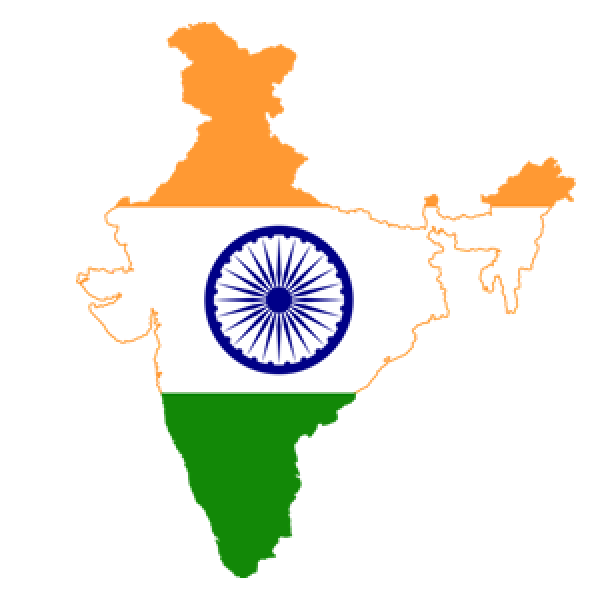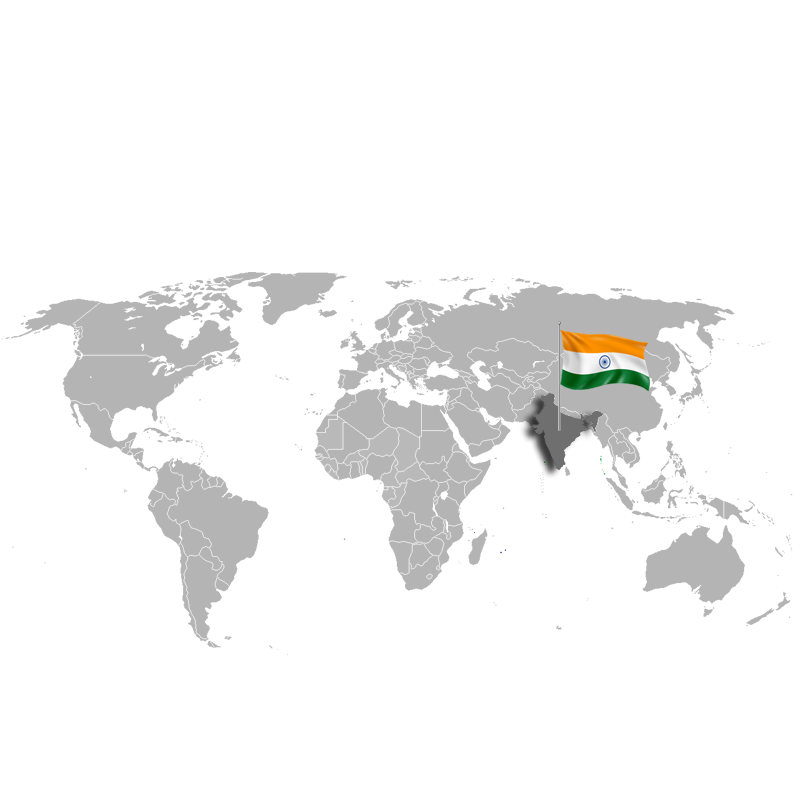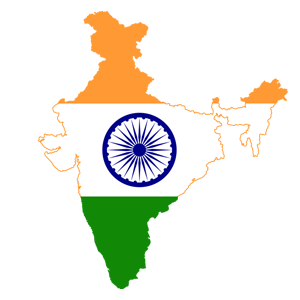India
We represent clients from all around the world in India every year. We see the globe as having no borders and are unafraid of language hurdles or time zones.


LegaMart Lawyers in India
Legal Industry in India

Articles about Law in India
Tell us more about your problem.
Please give a brief description about what it is you need to talk to our lawyers about ?
Most common legal demands in India
Legal Market Overview in India
The brokerage expects India’s growth to average 7% for 2022-2023 and contribute 28% and 22% to Asian and global growth, respectively.
Asia’s third-largest economy grew 9.2% in the fiscal year 2022, a sharp recovery from a 6.6% contraction in the previous year as COVID-19 lockdowns took a severe toll on its economy. The country now expects GDP growth for 2022-2023 at 8%-8.5%.
The Indian economy has fully recovered to the pre-pandemic real GDP level of 2019-20, according to the provisional estimates of GDP released on May 31, 2022. Real GDP growth in FY 2021-22 stands at 8.7%, which is 1.5% higher than the real GDP in FY 2019-20. Moreover, capacity utilisation in the manufacturing sector rose in the fourth quarter, as against the third quarter, implying a build-up in demand, which is consistent with the growth objectives of the Indian economy.
Future capital spending of the government in the Indian economy is expected to be supported by factors such as tax buoyancy, streamlined tax system, thorough assessment and rationalisation of the tariff structure and digitisation of tax filing. In the medium term, an increase in capital spending on infrastructure and asset-building projects is set to increase growth multipliers. Furthermore, revival in monsoon and Kharif sowing helped the agriculture sector gain momentum. As of July 11, 2022, the South-West monsoon has covered the entire country, resulting in 7% higher rainfall than the normal level.
India has emerged as the fastest-growing major economy in the world, and is expected to be one of the top three economic powers globally over the next 10-15 years, backed by its robust democracy and strong partnerships.

Despite continuing geopolitical concerns, rising interest rates in the US and India and high prices of crude oil and few other commodities, economic activity in India is holding up better than anticipated. Electricity consumption, manufacturing PMI, exports, power supply and other high-frequency indicators indicate that the pace of economic activity has fully recovered from the COVID-19 pandemic shock. Economic growth is anticipated to be fueled by the effective implementation of PLI schemes, development of renewable energy sources while diversifying import dependence on crude oil and bolstering of the banking sector. Recent government initiatives to boost revenue will aid in containing the rise in the current account deficit and ensure that any potential fiscal slippage is adequately contained. Overall, the first ten days of July and June were better than the first two months of FY 2022–23, which is a cause for comfort and even cautious optimism in these testing times. According to a Boston Consulting Group (BCG) analysis, India is expected to be the third-largest consumer economy as its consumption may quadruple to US$ 4 trillion by 2025 due to changes in consumer behaviour and spending patterns. By 2040, India is anticipated to overtake the US to become the second-largest economy in terms of purchasing power parity (PPP), according to a report by PricewaterhouseCoopers.

In 2011 there were 1.3 million lawyers in India, revealed a right to information (RTI) response by the Bar Council of India (BCI) to Delhi-based advocate Kush Kalra, with an average annual growth rate between 2007 and 2011 of around 4 per cent.
The detailed statistics, broken down by enrolments in each area with a state bar council over the last five years – 20 in total – show that Uttar Pradesh (UP) is home to the largest number of advocates at 288,297 (2.9 lakh). Over five years until 2011, the number of advocates in UP has grown by an average of 3.7 per cent per year.
The next largest areas are Bihar and Maharashtra & Goa both with around 113,000 lawyers each. In Bihar, the annual average growth rate was only around 2.4 per cent, while in Maharashtra & Goa the profession grew by 5 per cent.
The states with the largest growth rates are the states with smaller lawyer numbers, such as Jharkhand where the number of lawyers grew by 45 per cent to 9,789 in five years.
The second-fastest growing state was Jammu & Kashmir (J&K) where the number of lawyers increased by 35 per cent to 5,951 in five years.
Interestingly, both are also the most under-lawyered states out of the 20: when comparing the total number of lawyer per state to states’ populations and gross domestic product (GDP) Jharkhand and J&K emerge as the least competitive legal markets.
For every lawyer in Jharkhand and J&K, there are respectively 3,368 and 2,109 non-lawyers in the population. In GDP terms, each lawyer has a potential to tap into $2m of GDP on average.
In GDP per lawyer terms, Maharashtra and Goa, despite being third-largest in terms of lawyer numbers, remains the most attractive large market in terms of GDP: $1.98m of economy exists for every lawyer in the states. Other lucrative states when comparing the GDP to lawyer numbers are Tamil Nadu, Uttarakhand and West Bengal ($1.7m each), followed by Gujarat, Punjab & Haryana and Andhra Pradesh ($1.6m each).
Bihar and Uttar Pradesh are the states with the least economic wealth available per lawyer – only around $420,000 of GDP per lawyer.
In Delhi, $1m of local GDP per lawyer, although that would not realistically reflect work that comes to the Delhi-based Supreme Court from all over India. The national average in the states with bar councils, is around $1.1m of GDP per lawyer.
Busiest streets
Delhi is the most legally concentrated state in India, with every 300th person in the city being a lawyer, and the number of lawyers in Delhi has increased by a 29 per cent in five years.
Punjab & Haryana (391 non-lawyer per lawyer), Madhya Pradesh (517) and Uttar Pradesh (692) and Kerala (770), are next in the list.
In Maharashtra, where the number of lawyers rose by 25 per cent in five years, there are around 1,000 non-lawyer per lawyer.
The national average is 886 non-lawyers per lawyer with 19 per cent growth in lawyer numbers over five years.
In terms of lawyer per capita, West Bengal and Assam and Nagaland, are the least densely populated after Jharkhand and Jammu & Kashmir (around 1,500 non-lawyers to every lawyer).
Discrepancies
In November 2011, Legally India wrote in Mint that there were “approximately 1.2 million” lawyers in India, citing the number of the BCI website, while the BCI’s figures for 2011 supplied in the RTI and obtained from each state bar council show just under 1.3 million enrolled lawyers in India – although it is understood that some deceased advocates’ names may continue being rolls at times.
However, the BCI figure is 400,000 lower than 1.7 million, which BCI chairman Manan Kumar Mishra told the New York Times in an interview in January as the total number of lawyers.
Mishra later told Legally India that 1.7 million was an approximate but correct figure, although he had no comment on the lower number supplied in the RTI.
Area | Total Advocates | Advocates enrolled in last 5 years | 5 year growth % | Growth rate % (5 year-on-year average) | State GDP ($bn) | GDP / lawyer ($) | State population (m) | Non-lawyers per lawyer | Data as at |
Uttar Pradesh | 288297 | 51335 | 17.8 | 3.6 | 122.9 | 426,366 | 200 | 692 | 29/08/2011 |
Bihar | 113298 | 13394 | 11.8 | 2.4 | 47.7 | 420,749 | 104 | 916 | 31/08/2011 |
Maharashtra & Goa | 112706 | 28547 | 25.3 | 5.1 | 222.8 | 1,976,470 | 114 | 1,010 | 05/03/2011 |
Andhra Pradesh | 80225 | 12922 | 16.1 | 3.2 | 124.8 | 1,555,126 | 85 | 1,055 | 31/07/2011 |
Karnataka | 74032 | 15615 | 21.1 | 4.2 | 84.6 | 1,143,289 | 61 | 826 | 05/03/2011 |
Tamil Nadu | 67000 | 15924 | 23.8 | 4.8 | 115.5 | 1,723,284 | 72 | 1,077 | 31/08/2011 |
Punjab & Haryana | 64826 | 16831 | 26.0 | 5.2 | 103.4 | 1,595,039 | 25 | 391 | 31/07/2011 |
Madhya Pradesh | 64562 | 15704 | 24.3 | 4.9 | 52.7 | 816,579 | 33 | 517 | 21/08/2011 |
Gujarat | 64261 | 7071 | 11.0 | 2.2 | 105.4 | 1,640,186 | 60 | 940 | 05/03/2011 |
Rajasthan | 63370 | 15454 | 24.4 | 4.9 | 67.2 | 1,060,439 | 69 | 1,083 | 05/03/2011 |
West Bengal | 59535 | N/a |
|
| 100.0 | 1,679,180 | 91 | 1,534 | 28/10/2010 |
Delhi | 54258 | 15709 | 29.0 | 5.8 | 57.0 | 1,050,536 | 17 | 309 | 19/08/2011 |
Orissa | 44625 | 5831 | 13.1 | 2.6 | 41.1 | 921,681 | 42 | 940 | 31/08/2011 |
Kerala | 43339 | 5656 | 13.1 | 2.6 | 59.4 | 1,370,359 | 33 | 770 | 31/07/2011 |
Assam, Nagaland, etc | 23077 | 7074 | 30.7 | 6.1 | 23.2 | 1,004,030 | 33 | 1,436 | 05/03/2011 |
Chhatisgarh | 22940 | 4409 | 19.2 | 3.8 | 24.6 | 1,072,363 | 26 | 1,113 | 05/03/2011 |
Jharkhand | 9789 | 4378 | 44.7 | 8.9 | 21.7 | 2,216,774 | 33 | 3,368 | 31/07/2011 |
Uttarakhand | 9277 | 2821 | 30.4 | 6.1 | 15.8 | 1,703,137 | 10 | 1,091 | 31/08/2011 |
Himachal Pradesh | 7921 | 1770 | 22.3 | 4.5 | 11.4 | 1,439,212 | 7 | 866 | 31/07/2011 |
Jammu & Kashsmir | 5951 | 2080 | 35.0 | 7.0 | 12.1 | 2,028,231 | 13 | 2,109 | 14/11/2011 |
TOTAL | 1273289 | 242525 | 19.0 | 3.8 | 1413.2 | 1,109,850 | 1,128 | 886 |
|
India’s general rule of law score decreased by less than 1% in 2022’s Index. At 77th place out of 140 countries and jurisdictions worldwide, India’s rank decreased by 9 in the global rank in comparison to 2019 (68).
According to World Justice Project Approximately 32% of people surveyed experienced at least one legal problem in the last two years. 17% Were able to access help and 52% Experienced hardship in resolving their legal issue.
While the prevalence and severity of problems vary India, the most common problems relate to land, housing and consumer. Also Less than a %17 of people in India who experienced a legal problem sought any form of advice to help them better understand or resolve their problem, and those who did seek assistance preferred to turn to family members or friends (%50).

Frequently Asked Questions
What is the term of a patent in the Indian system?
The term of every patent granted is 20 years from the date of filing of application. However, for application filed under national phase under Patent Cooperation Treaty (PCT), the term of patent
will be 20 years from the international filing date accorded under PCT.
How is the International Trademark Registration done in India?
To file the international Trademark, the procedure is as follows:
Application of Trademark in India
There has to be a corresponding application to be filed in India for a Trademark.
Designated by several countries in Madrid Protocol
In a single application under the Madrid Protocol, several countries will be designated which are members of this system
Fees depend on number of classes
The fees will depend on the number of classes and countries designated.
Fees using Online Tool
The fees over the application of trademark can be calculated using the online tool in India, by choosing the office of origin in India, selecting the number of classes, and specifying the colour of the mark
Fees to Indian Trademark Registry
The fees of Rupees 2000 is payable in the Indian Trade Mark Registry
Examination by designated members
Upon filing the application, the mark is examined by each designated member country, where Registration is sought and then precedes the Registration.
5 years from the date of Registration
An international trademark registration under Madrid Protocol is however dependent on the corresponding Indian application for five years from the date of the international application.
Separate Registration in a different country who is not registered
If there is requirement or wish to obtain the Registration in a country which is not a member of the Madrid Protocol, separate national trademark registration has to be filed directly in that country.
Are foreign nationals treated differently on divorce?
The Indian courts are competent to adjudicate and grant divorce only under the Indian statutes. The Indian courts cannot pass orders on cases which require the applicability of foreign law. However, if a foreign national, who resides in India, marries under the Special Marriage Act, then such person would not be treated any differently than an Indian national when seeking divorce. (However, there is no specific precedent to support this.)
Can I file for divorce online?
No, there is no provision for online application for divorce. You have to file the divorce petition in the district family court where:
your marrriage ceremony took place, or
you last resided with your spouse, or
your spouse is residing at the time of filing for divorce.
There is no provision for online divorce in India.
What is the general situation for foreign companies in your jurisdiction? (For example, common presence, difficulty to setup, restrictive system, open and welcoming jurisdiction)
Foreign companies generally enter into India by way of liaison office, branch office or wholly owned subsidiary or joint venture. Some of the features of each structure are as follows:
- A foreign body corporate may open a liaison office in India
- to represent the parent company/group companies in India
- to promote export/import from/to India
iii.to promote technical/financial collaborations between parent/group companies and companies in India or
- to act as a communication channel between the parent company and Indian companies.
However, liaison offices are not allowed to carry on any business or earn any income in India and all expenses are to be borne by remittances from broad. The Reserve Bank of Indian grants permission for a period of three (3) years, which is eligible for renewal for a block of three (3) years.
From Income tax perspective, liaison office is a good option as there are no tax implications on a liaison office and there is no business activity undertaken by liaison office in India.
Reporting requirements: Liaison offices are required to file Annual Activity Certificate from the auditors with the Reserve Bank of India. Additionally, a liaison office is also required to file the financial statements with the Registrar of Companies on an annual basis.
Issues: It currently takes 6–8 months to set up a liasion office in India and approximately the same time to close its operations.
- A foreign body corporate may open a branch office for the purpose of engaging in the activities in which its parent company is engaged.
What are the functions of a Trademark according to the standard of International Trademark?
Identification from the origin of Goods or Services
No change in quality
Advertisement for goods or services
Creates the public image for the goods or services.
Which Act governs the patent system in India?
The patent system in India is governed by the Patents Act, 1970 (No.39 of 1970) as amended by the
Patents (Amendment) Act, 2005 and the Patents Rules, 2003. The Patent Rules are regularly
amended in consonance with the changing environment, most recent being in 2016.












